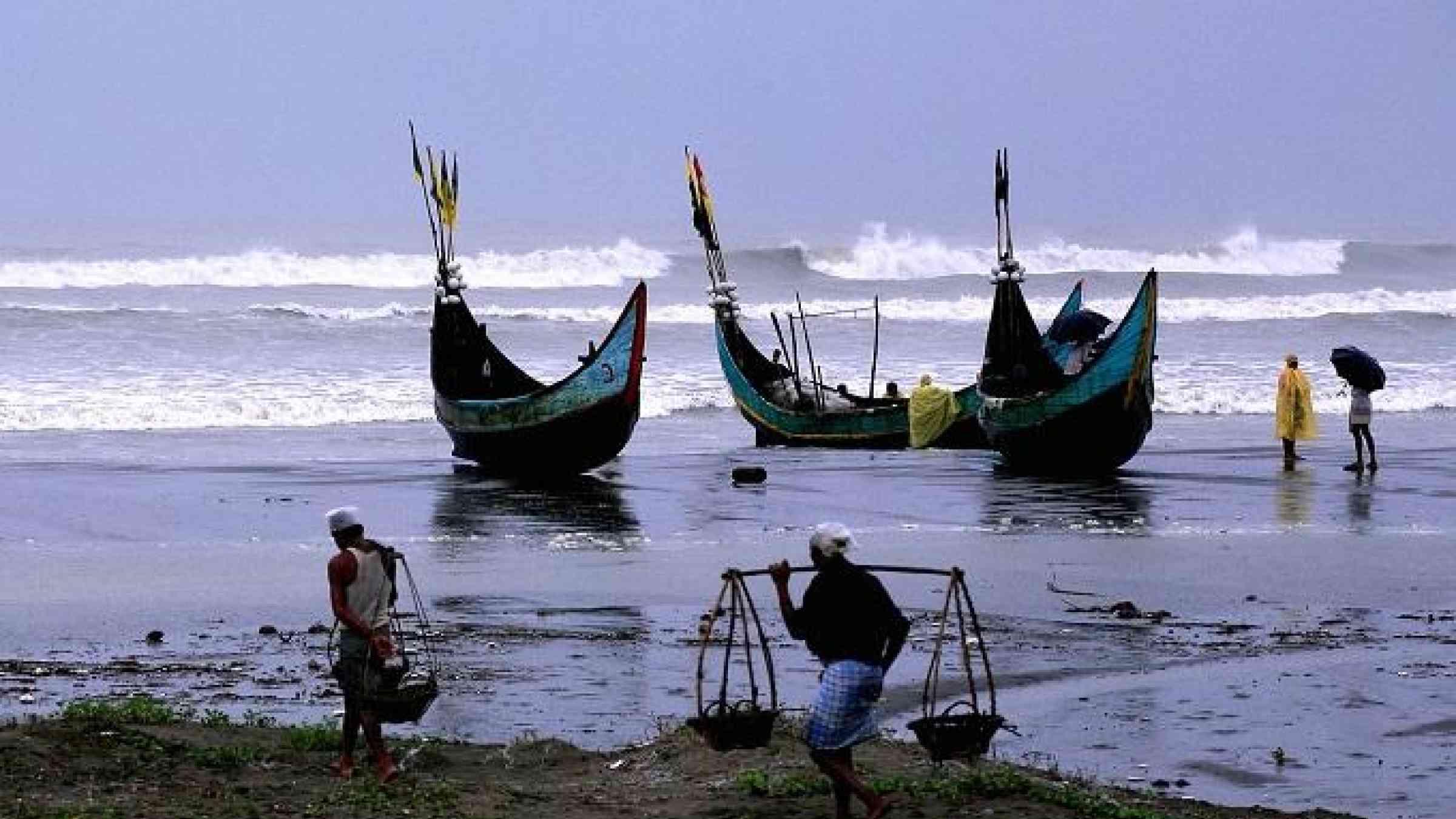Bangladesh: Battling climate induced displacement

By Tasneem Siddiqui
Disaster and climate induced displacement has become an important issue in the global disaster risk reduction (DRR) conversation. The Co-Chairs’ summary of 2019 UN Global Platform on DRR highlighted that forced to abandon their homes and livelihood, the displaced people are one of the most vulnerable population of the world, and the international community should do more to reduce disaster induced displacement. Bangladesh is globally acclaimed for its success in reducing loss of lives during disasters as well as managing relief after disasters. The country is on course to set yet another example by framing a national strategy for disaster and climate induced displacement.
[…]
The National Adaptation Programme of Action (NAPA 2005) visualises internal migration in the aftermath of climate hazards as a problem for the urban dwellers. The Bangladesh Climate Change Strategy and Action Plan (BCCSAP 2009) mentions migration but does not talk about the displaced. Again, it only mentions the need for monitoring different flows of migration. The Disaster Management Act 2012 made passing reference to emergency shelter and resettlement. It also does not provide any guidance on how to deal with various phases of displacement. The government’s Standing Orders on Disaster (SODs) provide more detailed instructions to different actors at national and sub-national levels on managing displacement. However, the focus is overwhelmingly on initial emergency shelter.
[…]
The draft strategy [Strategy on Disaster and Climate Induced Displacement] recognises that displacement has grave implications for the rights and entitlements of individuals and communities. Affected persons may face multiple human rights challenges in the aftermath of disasters. Their safety and security are compromised and they may experience gender-based violence, unequal access to assistance, basic goods and services, and discrimination in aid provision. A section of children may also experience abuse, neglect and exploitation. Children, older persons and persons with disabilities who rely on family support for their survival, may experience separation. Loss and destruction of personal document, unequal access to employment and livelihood opportunities, and forced relocation, unsafe or voluntary return are part and parcel of the experience of the displaced. The document chalks out a comprehensive strategy covering all phases of displacement of men, women and children—pre-displacement, during displacement and post displacement. Pre-displacement phase highlights actions required to prevent displacement; humanitarian emergency relief and evacuation are the key features of protection during displacement; and post displacement actions refer to durable solutions.
[…]
Durable solution refers to post-displacement phase. Strategic responses described in this phase attempts to avoid protracted displacement situation. According to UN Guiding Principles on Internal Displacement, durable solutions can be achieved through three types of measures. These are: return to place of origin, integration in the new location and resettlement/relocation to another safe place. Among these three types, return to the place of origin is the most preferred option. Return as a solution targets more specifically those who fall under “temporarily displaced” category. However, such return requires being sustainable in the long run from the perspective of safety, security, livelihood, ecosystem service, housing etc. The second option, which is local level integration is suggested when the displaced population cannot return to their areas of origin because of adverse environmental situations. Successful local level integration requires involvement of the host community. In case return and local integration are not found to be suitable options, the displaced deserve to be resettled in a safe place. The document also discusses institutional arrangement and funding.
[…]